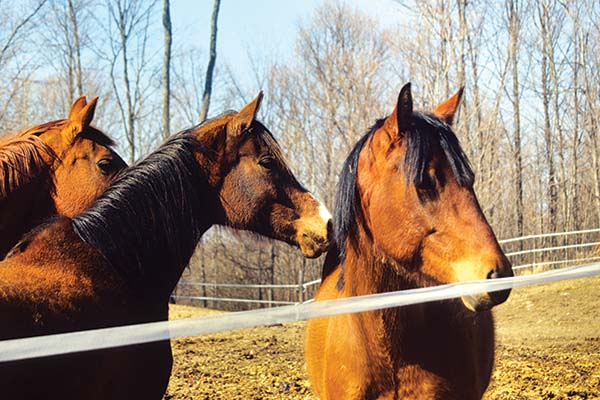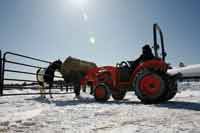Electric fencing remains a very popular and effective fence choice for many horse properties. And it’s for good reason: Electric fence is reasonably low-maintenance (no wooden rails to paint!) and typically does a fine job at keeping horses safely contained.
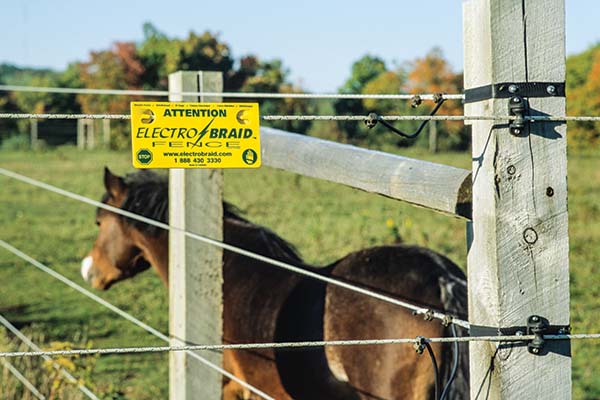
Electric Horse Fence ABCs
Some basic knowledge of electricity will help you better understand your fence. Don’t worry—it’s pretty easy, even if you know nothing in advance. This is because an electric fence is an example of a simple circuit.
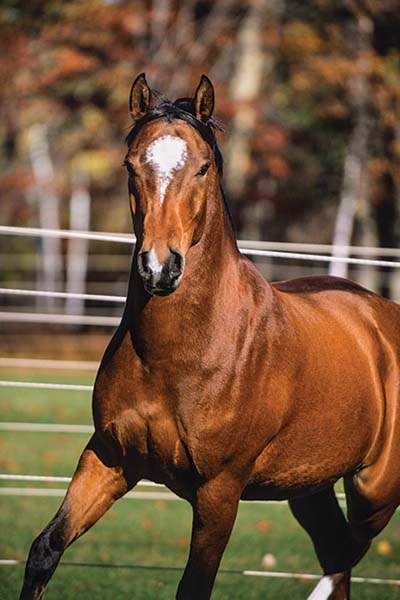
All of the fence lines are positive, and all of the ground around the pasture is negative. It’s just like a flashlight with the switch off—the positive and negative aren’t touching each other, so the circuit is broken and nothing happens. To complete the circuit, we need something electrically conductive to touch both the fence and the ground at the same time and connect them.
When an electrically conductive body (remember, you’re about 60 percent water and your horse is about 70 percent), connects the fence (positive) to the ground (negative) and becomes the missing link between the two, it successfully completes the circuit. In a real sense, you’ve just become the on/off switch in the flashlight!
For your horse, that harmless-yet-attention-getting snap of electricity is hopefully enough to remind him that he shouldn’t graze too close to the fence or try to escape from it. For you, it’s a reminder that shortcuts across the pasture aren’t worth the trouble.
By the way, this is why birds can sit on top of electric fence wires with impunity—they’re not touching the ground, so they don’t complete the circuit and don’t get shocked.
Shorts
The positive electricity in your fence always “wants” to get back to the negative by th
e fastest route possible. This can be a problem if tall grass or weeds grow up along the fence—they conduct electricity somewhat and can provide a means for the positive electricity to escape to the negative ground and thus weaken the power of your fence.
This is called a short, because the electricity is taking a shorter route home than it was supposed to. If possible, keep weeds trimmed down along the fence line.
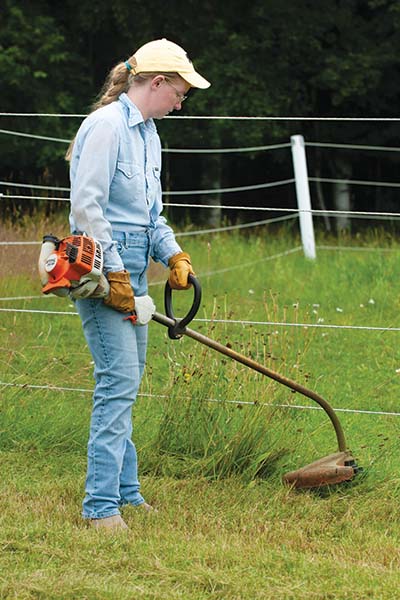
Ground, Ground, Ground
Is your electric fence not zapping strongly enough? It’s probably not grounded well enough. Those copper rods are a nuisance to drive into the ground (done with a T-post driver), but they’re really important for making your fence work.
The number you’ll need depends on a lot of things: the power of your charger, the type of soil you have, and the size of your pasture. There isn’t a perfect number of rods to use—the more you install (within reason), the better your fence should work.
Many problems with weak shocks can be solved this way. Your fence manual will give you a good indication of the number of rods to start with.
Or, Take the Ground Along
In dry locations (common in the western U.S.), there might not be enough moisture in the ground to carry the electricity, no matter how many rods are used. This can also occur in winter with deep snow, or in rocky soil.
In these instances, it’s common to connect one or more of the fence wires to the negative terminal rather than the positive. If a horse contacts multiple wires at once, he’ll likely touch a negative and positive fence strand at the same time and receive a shock that way. This is known as a “hot/ground” fence. You can also use a system like this to add more ground rods on the other side of the pasture.
Insulators
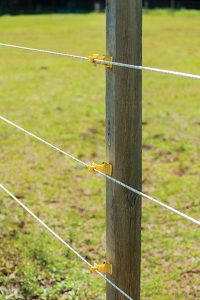
You don’t want the posts or gates of your electric horse fencing system to carry a charge. The posts are in the ground, so they would cause a short, and you obviously don’t want to get shocked when you touch a gate.
The solution is to use insulators, which are plastic or porcelain hooks or rollers that hold the fence wires in place. These materials don’t conduct electricity, so they keep the power on the fence where it belongs, and off of the posts and gates.
Insulators are one of the weaker links in your electric fence system and are prone to breakage. Keep an eye on them and replace as needed. Always keep a bag of new insulators on hand for this purpose.
Three Types of Electric◆ Tape: Tape fencing is often used for temporary setups, such as a camping trip, or for rotational grazing. It makes a very visible boundary for horses, which is nice, but it’s perhaps less aesthetically beautiful than other types of fencing. Tape doesn’t hold up very well in rough weather like wind and snow, as it begins sagging quickly. ◆ Wire: Plain, bare-wire fencing is not as visible and may not break easily if a horse becomes tangled in it, so you’ll want to do your research to see if it makes sense for your farm. It can be used as the hot wire along a wooden fence, and it lasts a long time. ◆ Rope/braid: Various types of highly visible polymer or braided rope fencing are available, and these are quite popular with horse owners. The rope is durable enough to be used as a permanent setup, and visible enough to act as a visual boundary for your horse.
|
Power Sources
Electric horse fences must be powered only by safe fence energizers.
◆ The charger doesn’t put out electricity constantly—it does it in short pulses. This creates the audible “tick, tick” sound.
◆ Some chargers plug into an ordinary household AC outlet. These devices take the powerful current from your farm’s electric service and reduce it down to a mild shock that, while certainly attention-getting, causes no harmful or lasting effects.
◆ Other charges are solar-powered. A small solar panel collects electricity and stores it in a battery. While usually weaker than AC-powered chargers, solar chargers are perfect for remote pastures where the nearest electrical outlet is far away.
◆ A third variety of charger contains just a battery (no solar panel) that powers the fence and needs to be recharged periodically.
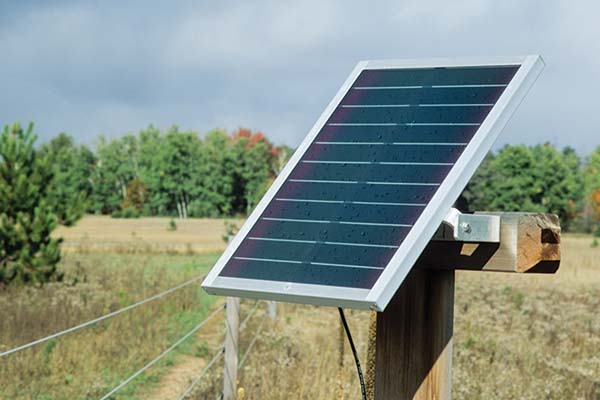
Lightning Protection
If lightning strikes near your electric fence, some of the power may ride along your fence wires, trying to get to the grounding rods. To get there, the lightning has to go through your fence charger—probably with damaging results.
To guard against this, you can install a lightning protector, kind of like a home surge protector, on your charger. You can also attach lightning arrestors to the corners of your pasture; these will help lightning get back to the ground before it reaches your charger. If there’s plenty of warning before the storm hits, you could always detach the charger from the fence, assuming there are no horses in it.
Tension
Follow the instructions for your particular type of electric horse fencing to achieve the proper tension. In general, rope and braided types of electric fence are intended to stretch and bounce to some extent, like a boxing ring.
Don’t put your fence posts too close together, or you’ll lose this effect. But you also don’t want the lines too loose, because sagging leads to decreased electric conductivity. (Plus, it looks bad!)
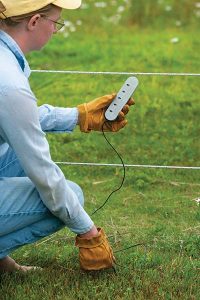
Testers
Finally, make sure your fence is working properly by using a fence tester. These devices not only show you how strong the charge is at various locations around the pasture, they are also invaluable in helping you track down problems with the fence.
Shorts and broken spots in the wire can be located easily with a tester. It’s one of the best tools for your fencing toolbox.
Ready to start building? With a bit of planning and the right tools, you can enclose a fairly large area with electric fencing in only a few days.
This article about electric fencing appeared in the September 2020 issue of Horse Illustrated magazine. Click here to subscribe!

